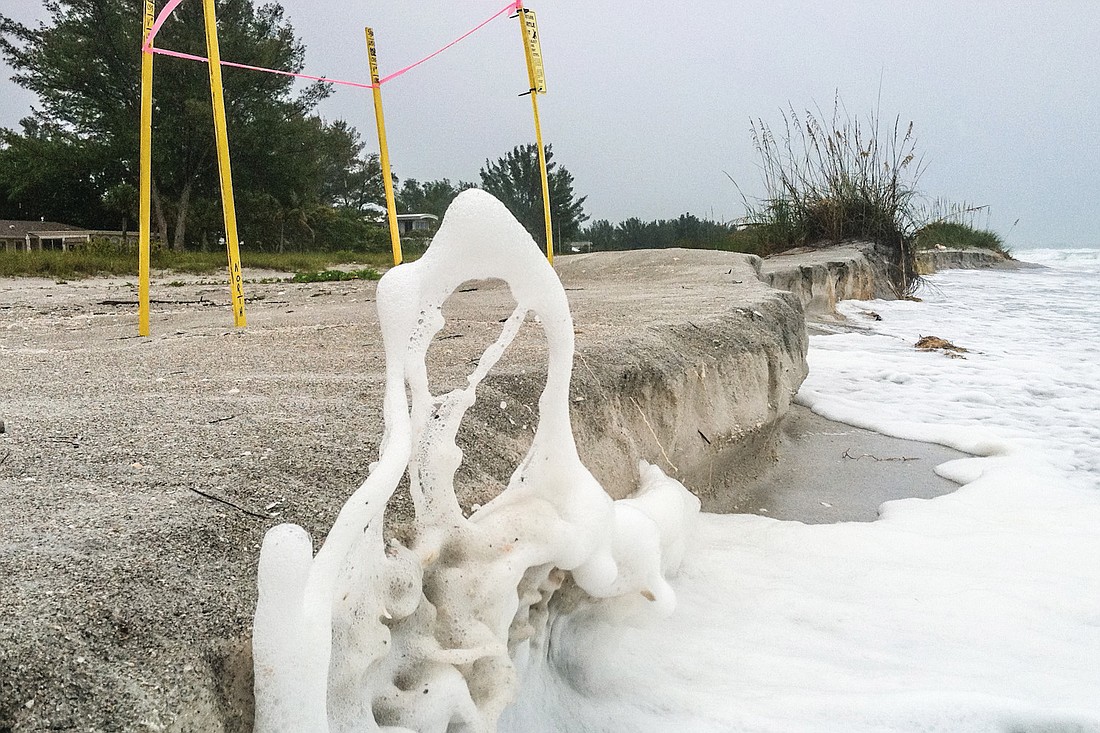- May 8, 2024
-
-
Loading

Loading

Before Tropical Storm Debby hit Longboat Key, turtle-nesting numbers were significantly higher than they were last year at this time of the season.
But, then, beginning Saturday, June 23, Debby came through Longboat Key and washed away Mote Sea Turtle Patrol nest markings.
Before the storm, the Mote Sea Turtle Patrol marked 1,367 nests in the area with yellow stakes; after the storm, only 244 nests were verified — or remaining. On Longboat Key, 77 of the 341 nests were verified.
According to Mote staff, some of the nests were destroyed. Sea-turtle eggs need oxygen to survive but can tolerate some water. If the water doesn’t recede, they drown.
Other nests have been damaged, meaning some of the eggs in those nests could still hatch. But there’s another issue: Because the yellow stakes surrounding a nest typically caution beachgoers as to the location of nest, people could unknowingly cause damage to nests whose stakes were washed away.
Turtle experts hope the high nesting numbers of the 2012 season will offset some of the losses.
This season was an outlier in comparison to previous years. In fact, as of June 23 there were more nests at the onset of the 2012 season (341 nests, 233 false crawls) than there were the entire 2011 season (275 nests and 261 false crawls).
“We’re having a season like we have never had before,” said Tony Tucker, manager of Mote’s Sea Turtle Conservation and Research Program. “I can’t speculate (why) beyond my data, but it does look like an upward trend compared to previous years.”
Each year the turtle research scientists record data, they become closer to figuring out a pattern in annual nesting numbers. Many factors are at play, and a lot of it has to do with the tracking system’s short history — state tracking numbers only date back to 1981, and Longboat Key’s numbers date back to 2005; in other words, there are not enough years recorded to “speculate.”
Another factor that could affect turtle nesting is the North Atlantic Oscillation cycle — a naturally occurring climate phenomenon that can cause decades-long patterns affecting weather and ocean conditions in the North Atlantic. These patterns have been tied to sea-turtle nesting patterns and partly explain why nesting numbers vary over time.
Human activity is also a factor in nesting and hatchling survival rates. It is important to remember that it is illegal to handle sea-turtle eggs or to interfere with nests or turtles on the beach. If exposed eggs are found, call Mote’s Sea Turtle Conservation and Research Program at 388-4331.
Mote’s Sea Turtle Patrol scientists and more than 300 volunteers will continue monitoring the 35 miles of beach daily.
For turtle track numbers, visit mote.org/2012nesting